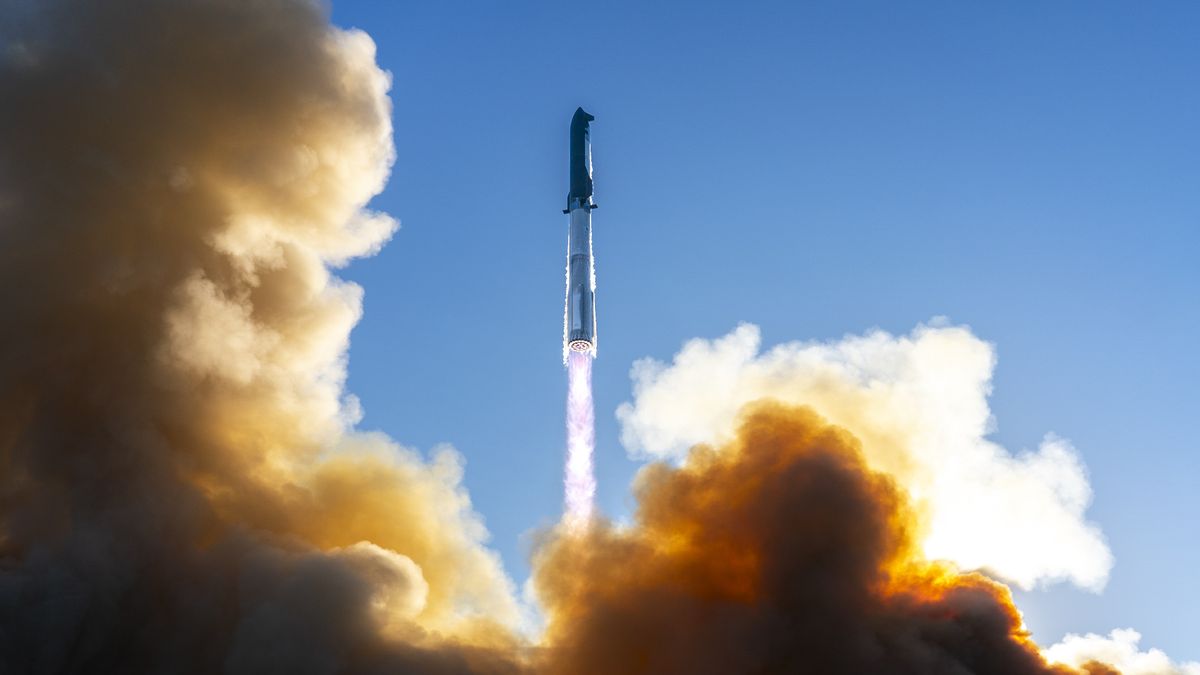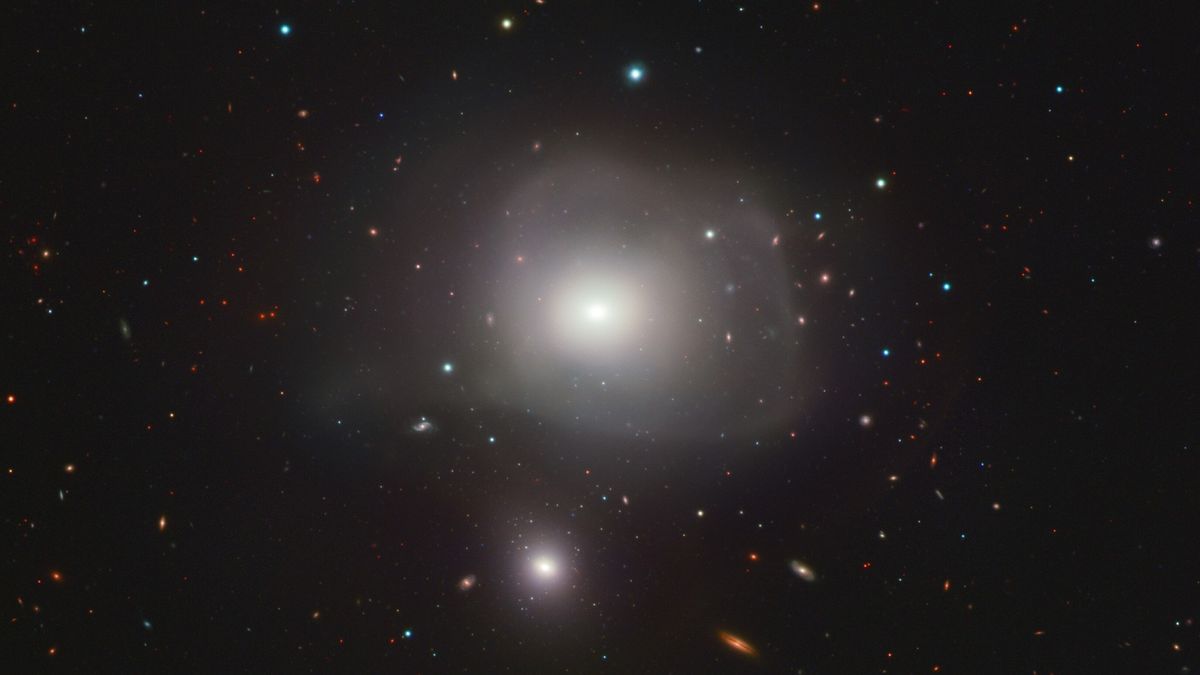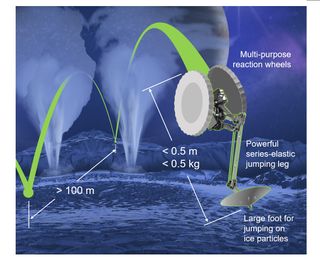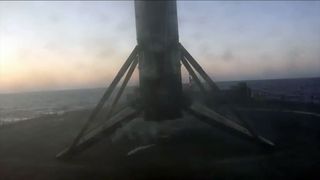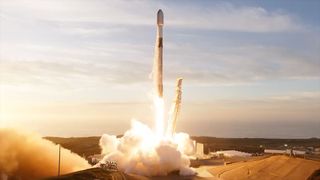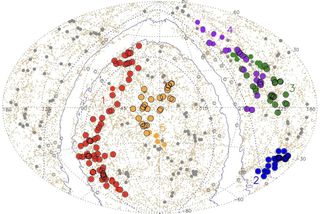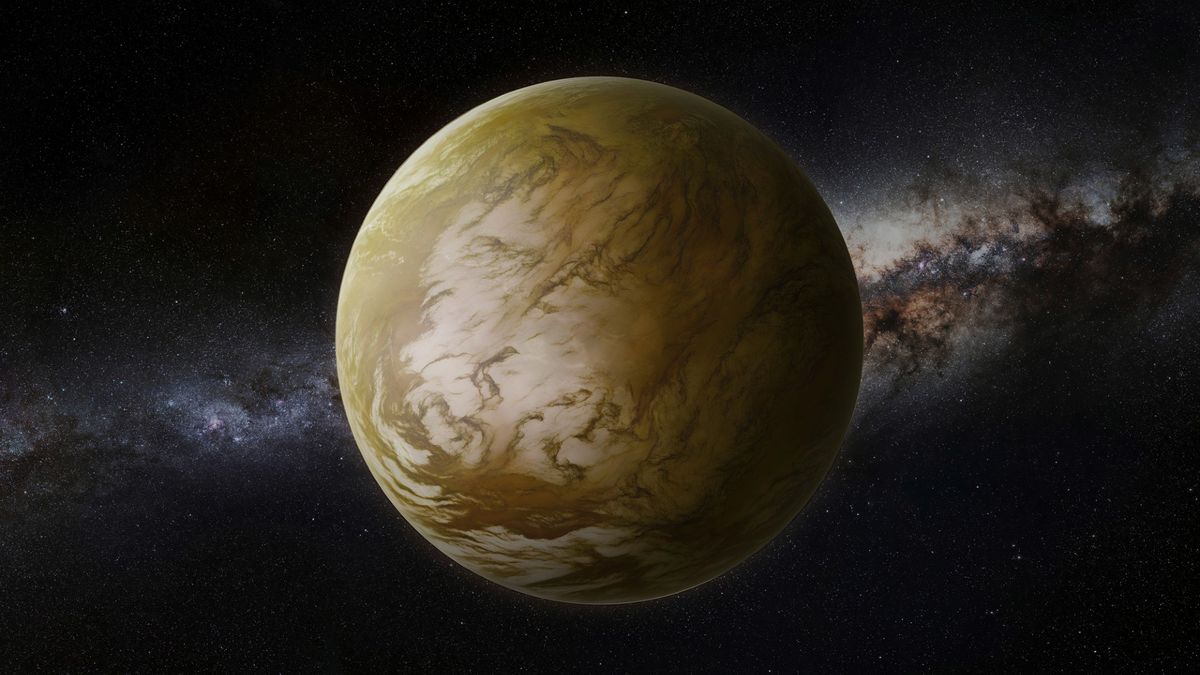SpaceX’s Starship megarocket will fly again this week, if all goes according to plan. The company is planning to launch Starship, the biggest and most powerful rocket ever built, for the eighth time on Friday (Feb. 28), Elon Musk said via X yesterday (Feb. 23). The 403.5-foot-tall (123 meters) fully reusable vehicle will lift off from Starbase, SpaceX‘s launch and manufacturing facility in South Texas. The company has not yet announced a target launch time, but you’ll almost certainly be able to watch it live whenever it happens; SpaceX has…
Read MoreCategory: The Moon
Our moon
Private Blue Ghost moon lander captures amazing footage of Earth behind and lunar surface below (video)
Firefly Aerospace is primed for a lunar landing attempt on Sunday (March 2) following a series of successful maneuvers in lunar orbit. The company’s Blue Ghost lander entered lunar orbit on Feb. 13, after launching atop a SpaceX Falcon 9 rocket on Jan. 15. It has since been lowering its orbit in preparation for a moon landing and is now all set for the upcoming attempt. “Blue Ghost’s third and final lunar orbit maneuver is complete! Early this morning, our #GhostRiders performed a 16-second burn with our RCS thrusters to…
Read MoreAstronomers discover misshapen galaxy is a cosmic predator that bears ‘scars’ from its last meal (photo)
An unusual elliptical galaxy with a history of absorbing smaller galaxies appears to be approaching its next target. New images from the Very Large Telescope (VLT) at the European Southern Observatory’s (ESO) Paranal Observatory suggest that the galaxy, known as NGC 3640, may soon merge with a smaller galactic companion. Located 88 million light-years from Earth, NGC 3640 belongs to a group of galaxies that range in shape and size, including its own unusual oval or egg shape. The VLT images revealed that NGC 3640 has eaten other galaxies over…
Read MoreSwimming robots, fusion satellites and more! New NASA-funded studies could someday ‘change the possible’
NASA has awarded funds to 15 trailblazing concepts for space technology that could help us explore and inhabit the solar system. The NASA Innovative Advanced Concepts program (NIAC) is the agency’s scheme to help support the development of early stage innovative space technology concepts formulated by academics, innovators and entrepreneurs. This year’s NIAC Phase 1 grants go to projects including robots for ocean and ice world exploration, in-space manufacturing, balloons for exploring Venus, unravelling the mysteries of black holes and more. “Our next steps and giant leaps rely on innovation,…
Read MoreSpaceX launches 22 Starlink internet satellites from California
SpaceX launched another set of its Starlink internet satellites from southern California on Saturday evening (Feb 22). A Falcon 9 rocket carrying 22 Starlink spacecraft lifted off from Vandenberg Space Force Station at 8:38 p.m. EST (5:38 p.m. local time or 0138 GMT Feb. 23). The first stage of a SpaceX Falcon 9 rocketrests on the deck of a drone ship shortly after launching 22 Starlink internet satellites to orbit from Vandenberg Space Force Base in California on Feb. 22, 2025. (Image credit: SpaceX via X) As to plan, the…
Read MoreSpaceX launches 22 Starlink internet satellites from California (video)
SpaceX launched another set of its Starlink internet satellites from southern California on Saturday evening (Feb 22). A Falcon 9 rocket carrying 22 Starlink spacecraft lifted off from Vandenberg Space Force Station at 8:38 p.m. EST (5:38 p.m. local time or 0138 GMT Feb. 23). As to plan, the Falcon 9’s first stage came back to Earth about eight minutes after liftoff. It touched down on the drone ship “Of Course I Still Love You,” which was stationed in the Pacific Ocean. (Image credit: SpaceX via X) It was the…
Read MoreThis Week In Space podcast: Episode 149 — SpaceX, Moon Missions, and Killer Asteroids?
SpaceX, Moon Missions, and Killer Asteroids? – 2024 YR4, ISS Deorbiting, and NASA Budget Cuts – YouTube Watch On On Episode 149 of This Week In Space, Rod Pyle and Tariq Malik discuss the latest space news, including a potentially hazardous asteroid, SpaceX’s plans to launch and land in the Bahamas, and the ongoing debate surrounding the retirement of the International Space Station. They also touch on NASA’s budget cuts, the search for extraterrestrial life, and the development of new radiation protection technology for deep space missions. Asteroid 2024 YR4:…
Read MoreAstronomers discover ‘Quipu,’ the single largest structure in the known universe
Astronomers have discovered what may be the largest-scale structure in the known universe — a group of galaxy clusters and clusters of galaxy clusters that spans roughly 1.3 billion light-years across and contains a mind-boggling 200 quadrillion solar masses. The newfound structure is dubbed Quipu after an Incan system of counting and storing numbers using knots on cords. Like a Quipu cord, the structure is complex, made up of one long filament and multiple side filaments. It spans roughly 1.3 billion light-years (more than 13,000 times the length of the…
Read MoreWhat’s that smell? Astronomers discover a stinky new clue in the search for alien life
Astronomers have discovered that sulfur may be a key to helping us narrow down our search for life on other planets. It’s not that sulfur is a great indication that a planet is inhabited. Instead, it’s the opposite: Significant amounts of sulfur dioxide in a planet’s atmosphere is a good sign that the world is uninhabitable and we can safely cross it off the list of candidates. One of the holy grails of modern astronomy is finding life on an alien planet. But that is an extremely daunting task. The…
Read MoreEinstein wins again! Quarks obey relativity laws, Large Hadron Collider finds
Is there a time of day or night at which nature’s heaviest elementary particle stops obeying Einstein’s rules? The answer to that question, as bizarre as it seems, could tell scientists something very important about the laws of physics governing the cosmos. In a first-of-its-kind experiment conducted at the world’s most powerful particle accelerator, the Large Hadron Collider (LHC), scientists have attempted to discover if the universe’s heaviest elementary particle — a particle not composed of other smaller particles — always obeys Einstein’s 1905 theory of special relativity. More specifically,…
Read More